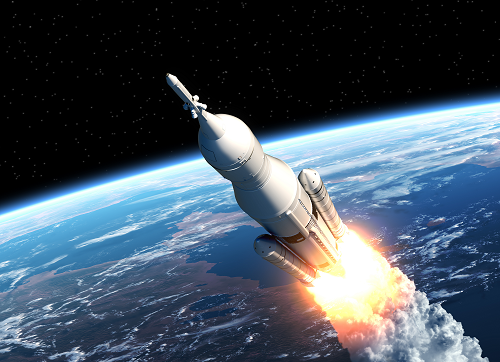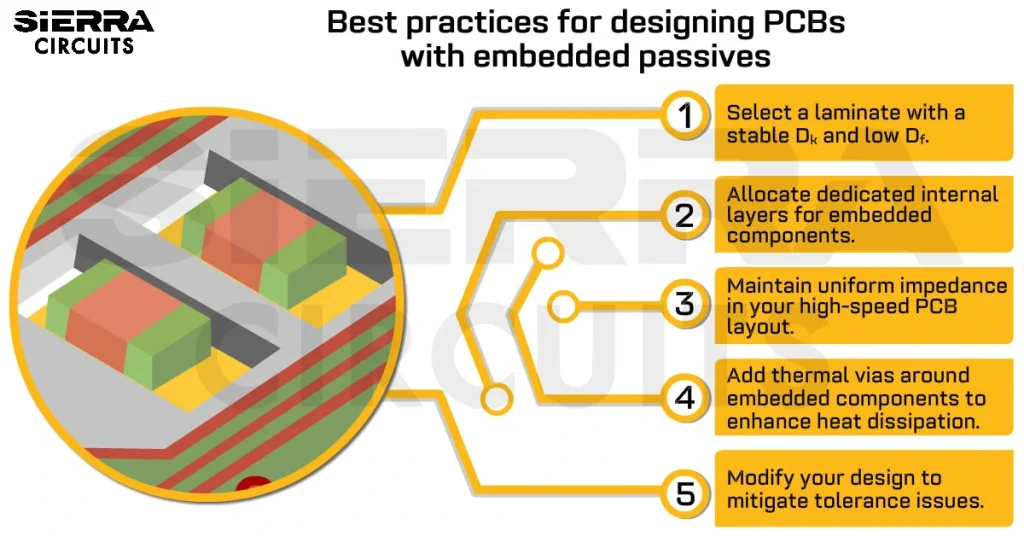Contents

On-demand webinar
How Good is My Shield? An Introduction to Transfer Impedance and Shielding Effectiveness
by Karen Burnham
Vibrations in space vehicles PCBA causes fatigue and eventually failure of some parts in space missions. These electronic devices should function precisely in harsh space environments and ensure high reliability. Vibrations in space vehicles cause significant energy loss and undesirable noise.
After firing a rocket engine, an intense noise generates in the form of acoustics (reflection of sound waves) and vibrations within launch pads, spacecraft, and launch vehicles. Printed circuit boards are components that are prone to failure due to these kinds of high vibrations.
During the launch of space flights, circuit boards undergo extreme shock and stress in addition to physical stress imposed by radiation and vacuum conditions. Under vacuum conditions, the heat generated by the board is difficult to dissipate, which leads to cracks in PTHs and solder joints. Electrostatic discharge (ESD) occurs when the charged particles deposited on the surface enter into the circuit board. Therefore, it is good to avoid the objects that collect a charge (charge-storing particles like FR4, Kapton) in the spacecraft.
What are the different types of vibrations in space vehicles?
In general, vibration is a periodic motion of a rigid or elastic body that moves from a position or state of equilibrium. Vibrations are harmonic if their frequency and magnitude are constant. However, vibrations that vary in frequency and magnitude with time are known as random. Following are the sources of vibrations in space vehicles:
- Rocket noise
- Aerodynamic excitation
- Turbulence environment
- Direct vibration excitation
Rocket noise
Rocket motor exhaust is the source of the most severe vibration in space vehicles that are powered by rockets launched from earth. There is a broad spectrum of sounds within the audible and subaudible range of the rocket exhaust. Therefore, the vehicle structure, skin, and equipment have resonances at most of the frequencies where this energy is stored.
The noise at launch can damage the spacecraft, delicate electronics, and payload packages (object or entity carried by aircraft or launch vehicle) aboard.
Aerodynamic excitation
During the high-speed flight, various situations occur in aerodynamics that may excite vehicle vibrations. These include:
- Oscillating shocks and separated flows
- Base pressure fluctuations
- Self-excited vibrations (fluttering)
- Flow exceeded projections
- Flow across cavities
To eliminate such vibrations, it is necessary to modify the aerodynamic design and flight profile.
Turbulence environment
The earth’s atmosphere consists of four layers: troposphere, stratosphere, mesosphere, and thermosphere. For the launching of space vehicles and re-entry phase, the potential source of structural vibration lies in the upper troposphere winds and their turbulent structure. Vibrations are the result of several aerodynamic lift forces acting on the vehicle. As the flight path changes, the direction and magnitude of the atmospheric winds generate these forces.
Direct vibration excitation
Even after the liftoff vibrations in rocket engines occur because of their own operation. It is due to the combustion instability in rocket engines. To resolve these issues, a review of the engine design is essential.
The oscillations that occur at low frequencies are known as chugging. Whereas oscillations that arise at high frequencies are known as screaming. The factors affecting these oscillations will depend on variable forces such as thrust force.
Space vehicle vibration sources may vary according to the rocket type, mission, and payload. Hence, it is essential to conduct preflight testing to ensure onboard systems, such as electronics and populated boards, operate reliably.
Effects of vibrations on space vehicle PCBA
A circuit board is a mechanical system having different characteristics that define its response towards stress and strain. The board may lead to failure and cracking if it reaches the maximum tolerance for the strength parameters (bending and peel). Additionally, the response of component attachment to vibration negatively impacts the board functionality. The through-hole components and SMDs (surface mount devices) consist of soldered connections that behave like damped resistors (that reduce the level of oscillations). These connections may break due to the source, intensity, and quality of the solder joint. As a result, irregular operations will form due to non-conformance in space vehicles.
The following failures occur due to the consequences of vibrations on PCBA:
- Damaged capacitors
- Broken joints
- Breakage of board tracks
- PCB delamination
- Broken barrels
- Shocks
- Through-hole cracking in pins
- Fatigue of lead wire
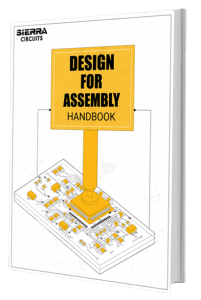
Design for Assembly Handbook
6 Chapters - 50 Pages - 70 Minute ReadWhat's Inside:
- Recommended layout for components
- Common PCB assembly defects
- Factors that impact the cost of the PCB assembly, including:
- Component packages
- Board assembly volumes
Download Now
How to protect the circuit board from vibrating
Circuit board protection from vibration must be acknowledged in the initial stage of PCB design. Following are some of the necessary measures:
- Proper component mounting is necessary. An extensive level of detailed analysis is essential to make sure the manufacturer follows all of the specifications.
- It is critical to pay attention to the adhesive when assembling the components. Sealing agents act as shock absorbers and reduces vibrations on the board.
- Perfect soldering is important for establishing reliable connections.
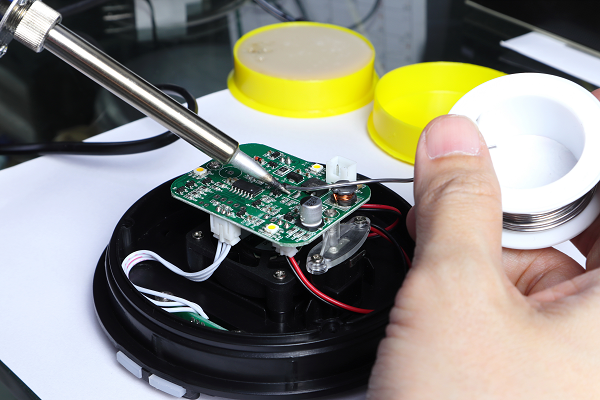
- Constricting circuit boards around the edges prevent vibrations.
- A casing provides information about the vibration levels on the particular board.
- Anti-vibration frames help reduce vibration. It increases the cost but proves to be very important for high-grade applications.
- Mechanical waves may also cause vibration in PCBs since they travel to weak parts and damage them. The solution to this problem is to install the interconnections near the bulky parts.
Reliability is a vital factor for space hardware. It is impossible to repair electronics hardware if it fails, so it must be extremely reliable to limit failure risks to nearly zero. Additionally, long-term satellite missions require consistent performance for several years without any technical glitches. An individual failure on the board leads to a functional loss on the spacecraft. To learn more about common classes of failure in detail, refer to 6 types of electronic component failures in PCBs.
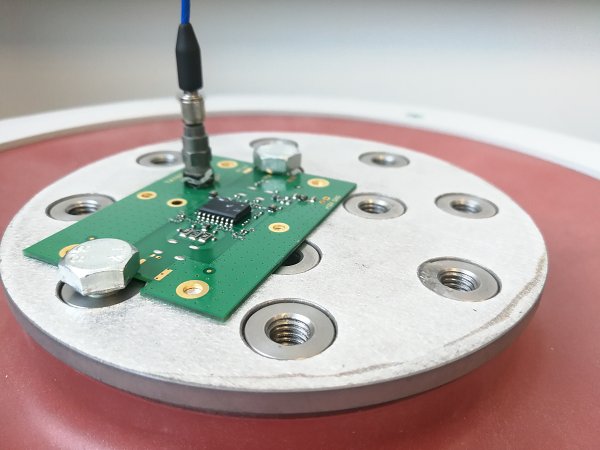
What are the PCB design considerations to resist vibration?
Highly reliable boards require stringent space PCB design guidelines, robust design flow, and efficient techniques. This process fulfills the electrical, mechanical, and thermal conditions of the circuits.
There are several design guidelines to reduce the effects of vibration on PCBA:
- De-rating is the process of operating the device or component below its normal operating range. It minimizes the failure rate related to severe working conditions. For space vehicles, the current carrying capacity of the track should be de-rated by 66%. In practice, trace width varies according to the temperature increase due to the current flowing through the traces. The heat transfer happens through conduction and radiation. Convection is not possible in space due to vacuum. The current carrying capacity of the conductor thus needs to be lower to avoid damage from excessive heat.
- Flight model (FM) PCBs require through-hole and buried vias, but blind vias are not acceptable.
- FM boards should not use trimpots, variable capacitors, or variable inductors. Components must have specific values.
- Wide conductors act as solder thieves by drawing solder from pads to conductors. Further, if a conductor goes to a via connecting an inner power plane, it will act as a heatsink and draw heat away from the pad or component lead during the soldering. As a result, cold solder joint error forms. When setting up such connections, it is better to use:
Conductor width: 1mm
Conductor length: 1mm
Pad-to-track ratio: 1.5:1 - To avoid twists and wrap in the circuit board, the structure of the board that includes layers, copper distribution, and component placement should be symmetrical.
- PTH is only acceptable. However, standoffs, eyelets, rivets, etc. are prohibited.
- Circuit boards that are installed in space vehicles are known as onboard PCBs. It is not recommended to use a solder mask on such boards. Several issues occur with solder masks, such as poor adhesion, lower performance regarding outgassing, and a high risk of selective tin-lead stripping.
- A copper-clad laminate structure should be used since it offers better peel strength.
- To prevent ESD and Paschen discharge that occurs during launch, external layers of electronic components should have conformal coatings. This type of electric discharge occurs between two opposite parallel plate electrodes, both using a particular material, having a particular distance, in a particular gas species under a definite minimum voltage.

- The conductive patterns and dielectric materials must have wide conductor dimensions > 0.1mm, to avoid slivers and be peelable.
- To prevent open circuit failure of a single interconnection, critical nets need to be routed on the same layer. When it’s not possible, a minimum via should be used along with a second redundant track and via.
It is crucial to check all the components to eliminate non-conforming products, defective parts, or components that are likely to fail.
Heat transfer in space vehicles
Heat balance between the vehicle and the surrounding environment (including the sun, the earth, its atmosphere, and space) influences a spacecraft’s surface temperature in the earth’s orbit. Solar energy can be received directly from the sun or indirectly from the earth and its atmosphere (reflected). Average temp. in space is about 3 K. It is crucial to maintain the thermal balance in space vehicles. Conduction and radiation are the only two modes of heat transfer to get rid of excess heat in space vehicles. As the international space station (ISS) faces the sun, its surface temperature can reach 121°C. In the direction away from the sun, temperatures can reach -157°C.
Conduction is the transfer of heat between or through substances that are in contact. The heat around the spacecraft moves due to conduction. There are some forms of radiation that are visible (visible light) or can be felt (infrared radiation). Whereas others, like X-rays and gamma rays, are not visible and require special equipment to observe.
Besides designing aerospace PCBs with efficient thermal management, there are other techniques for thermal control:
Radiators
After heating, several materials, emit infrared radiation better than others. These are used as radiators. The components that would otherwise heat up too much are attached to a plate made of these materials and exposed to space. Heat transfers from the component to the radiator by conduction, and finally to space through infrared radiation.
Thermal blanket
A thermal blanket, also known as a space blanket is an exterior protective cover around the spacecraft. It consists of multiple layers of thin sheets providing insulation to reduce heat loss due to thermal radiation. It acts as a shield against micrometeoroid impacts.
Surface coatings
Surface coatings influence the interaction of radiation with objects. These coatings determine the amount of heat that is absorbed by, radiated to, and reflected by external heat sources.
Heaters
Heaters protect components from cold environments and compensate for non-dissipated heat. A heater’s role is to provide precise temperature control of a particular component by combining it with a thermostat or solid-state controller. Heaters maintain the minimum working temperature of components even before switching them on.
It is also important to understand the critical conditions, material selection, thermal interfaces, etc. to ensure the proper functioning of circuit boards for thermal control system.
Considering the aforementioned facts, controlling the effects of vibrations on PCBA is of utmost importance. Appropriate testing and validation ensure the reliability of space vehicles.
If you have any further questions about vibrations in space vehicles, please let us know in the comments section. To learn about class 3 boards that are implemented in space and defense electronic devices, download our design guide.
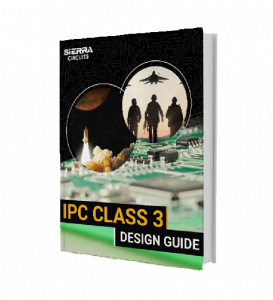
IPC Class 3 Design Guide
8 Chapters - 23 Pages - 35 Minute ReadWhat's Inside:
- IPC guidelines for manufacturing defects
- IPC standards for assembly processes
- Common differences between the classes
- IPC documents to set the level of acceptance criteria





